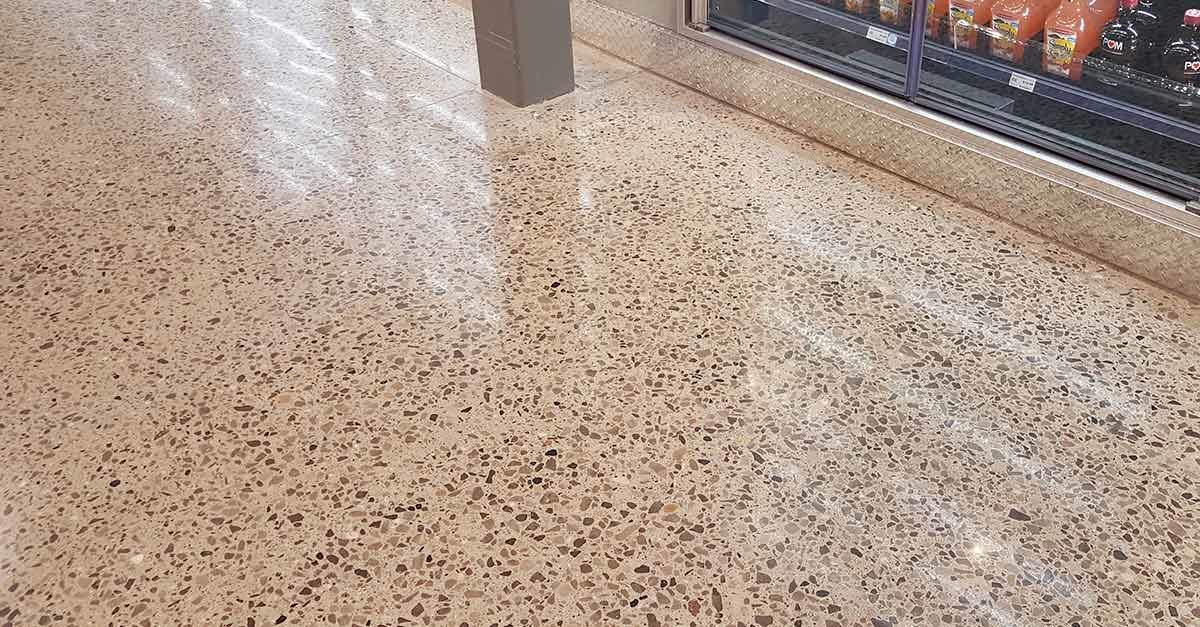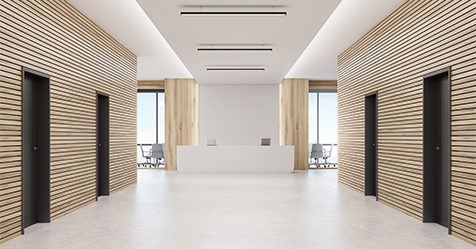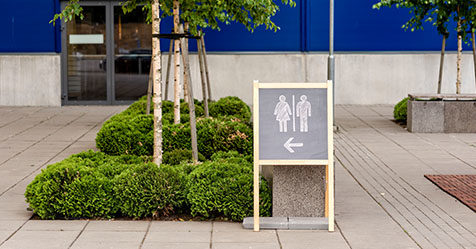Concrete floors have evolved over the decades. They were originally restricted to the most functional facility areas, such as basements, warehouses, and industrial work areas. Now you see concrete floors just about anywhere in all types of residential and commercial facilities. You may notice these floors have a new look compared to concrete floors of the past.
Today’s concrete floors are often dyed or stained in many different colors and decorated with patterns and designs. Thanks to these new looks, some facilities, such as retail buildings, consider concrete the “in” floor. And for good reason:
- Concrete can be amazingly durable
- When compared to other flooring materials, such as stone, concrete is very cost effective
- Concrete floors typically require less maintenance than other floors.
It’s this last point that often results in one of the biggest misconceptions about concrete floors.Yes, they usually are low-maintenance floors, but low maintenance does not mean no maintenance.
Let’s clear up this and other myths about concrete floors. The more cleaning contractors know about these floors, the better they can clean and maintain them.
Myth 1: Concrete and Cement Are the Same Thing
While the terms are used interchangeably, cement is just an ingredient found in concrete. Along with cement, concrete is also made up of gravel, sand, and crushed stones. If the concrete is made with chips of marble, granite, and other stone products, then it is terrazzo.
Myth 2: The Best Way to Clean Concrete Is Wet Mopping With Pure Water
Concrete is like any other type of floor. It gets soiled and scuffed by heel marks, spills, etc. Concrete floors are very porous, unless they have been sealed. Select a cleaning solution specifically designed for concrete floors. If using a floor machine, choose concrete cleaning solutions with a low-friction lubricant. This makes it easier to glide the machine over the floor. Cleaning large concrete floor areas with an automatic scrubber or a scrubber alternative is recommended.
Myth 3: Concrete Floors Are Prone to Cracking
This is not a misconception. If a concrete floor is not poured over a smooth, level surface, it may develop cracks soon after installation.But even if it is poured on an even surface, cracks can still form. Sometimes these cracks are small, but other times they are substantial and quite noticeable. The main reasons for these cracks are the “settling” of the concrete after it has been installed, along with shifting of the building. Cleaning contractors should pay close attention to these cracks, as they can collect soil and moisture and develop bacteria and odors. Keep them clean and dry.
Myth 4: A Floor Maintenance Program Is Not Necessary for Concrete Floors
Earlier we mentioned that concrete floors should be treated like any other type of floor. That means a maintenance program is needed. However, it may not be as extensive. If the floor does not have a sealant or finish applied, sweep or vacuum it daily. Wet mop it or clean it with a floor machine using cleaning solutions such as those mentioned earlier.
If an impregnator has been applied to the floor, or if a sealant and a finish were applied, you will need to buff or burnish it. You also may need to strip and refinish the floor, based on its appearance and the amount of time, energy, and funding the customer wants to put into it.
Here’s a tip: select floor care products from the same manufacturer. They are often designed to work together. This synergy will make your job easier.
Myth 5: Always Apply an Impregnator or Sealant to a Concrete Floor
Although it is not necessary, it is highly recommended that a sealant be applied to the floor, even if no finish is applied. The sealant prevents soil and moisture from working their way into the concrete. In addition, a sealed and finished floor is invariably easier to clean and maintain.
Myth 6: A Polished Concrete Floor Includes a Finish
When we use the term “polished concrete,” it typically refers to concrete floors polished using grinding equipment. This process is similar to sanding the top layer of the floor. The grinding process will help determine the floor’s gloss, from a flat sheen to a high-gloss shine. A modern version of the polishing process allows contractors to polish and maintain concrete floors using a standard floor scrubber with specialized pads and chemicals. This process is generally easy to perform, does not require the use of specialized equipment, and is cost effective.




